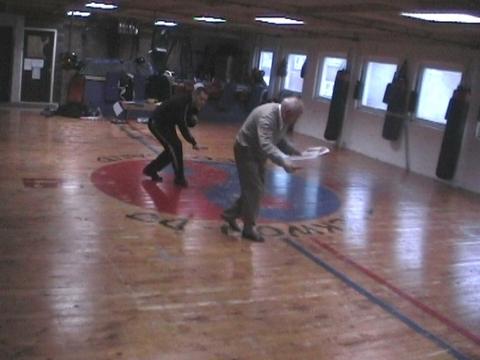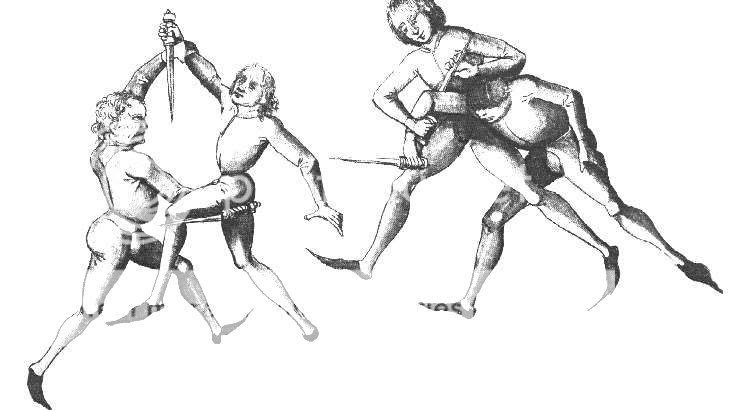lklawson
Grandmaster
Please don't misunderstand. I'm not upset with you in any way. Just using the opportunity you so kindly presented for me.enough already. :-(
Peace favor your sword,
Kirk
Please don't misunderstand. I'm not upset with you in any way. Just using the opportunity you so kindly presented for me.enough already. :-(
Indeed. That would be thinking logically about it. Actually that would be thinking about it. Nevertheless, it seems common for many people to assume that "martial art" is some sort of direct translation from one of the oriental languages. They correctly understand that the individual words "martial" and "art" are English (well, Latin-ish anyhow) but, for some reason, seem to believe that putting the two words together to form the term of art "Martial Art" never occured before the introduction of oriental martial arts and that it must, somehow, be a translation or something. <shrug>lklawson: given the word itself you don't really need any belief in it's european origin... Etymologically it refers to Mars - the god not the planet.So we have a word here that refers to an ancient roman god - why would easterners create a category name which refers to that god from that era? Or why would we europeans name eastern arts after a god long since "dead" then?
14th sounds right. I could look up the reference and find the exact date (burried somewhere in my stacks-upon-stacks of material), but I doubt anyone reading this thread cares for what the exact date is.(BTW, if I recall it well, the term was first mentioned in either the 14th or the 15th century; I may be wrong though)
I'll dig through my sources when I get a chance.I would thank you very much if you could find the exact source... I scrolled through my books, but most German sources use "kunst des fechten" - and as I focus on the German tradition, I don't really have Italian, English or Spanish sources.
And yes, I was too lazy to read through Liberi right now.:lol:
ok, then I think this quote applies.:EG:Please don't misunderstand. I'm not upset with you in any way. Just using the opportunity you so kindly presented for me.
I'll dig through my sources when I get a chance.
Peace favor your sword,
Kirk
That's good enough for me.The earliest one I can think of is from Pallas Armata (an English rapier manual), which refers to the noble "Martial Art of Fencing" in its poetic preface. It's from the 16th Century
As a pre-emptitive strike to (but not against) those who may come in and start speaking about the spiritual part... Originally all martial arts have evolved for more efficient killing. No one can deny it, I think. In Europe, the arts became competitive sports (both martial and non-martial), in the orient, they mostly became either competitive sports or got that spiritual part. You see, when you train for survival and victory, and your very life depends on the art, you don't really care for the philosophal part. If your training is no longer the last thing between you and death, you'll have time to think about things not relevant in combat. This is of course not a degrading of more modern arts - it's only what makes Wittenweller's work as much a martial art as Tallhoffer's. (for those unfamiliar with these names, Wittenweller wrote purely about fighting, while Tallhoffer has parts dealing with manners, religion, etc.)
...
Sorry - I might be in ranting mode.
After re-reading my post, I realized that dealing with 3 buyers AND speaking on the phone AND checking resources AND writing the post simultaneously probably wasn't a too smart idea...
Especially the last part was written too hastily. I understand what did I mean, but I should have written it more clearly for the non-telepathic minority. I wanted to clarify that in my opinion the spiritual or not totally fight-related "content" or lack of it doesn't matter in the decision if it's an "art" or not. I hope no one took my words as saying European arts have only combative parts. As thardey pointed out, it's not true.
I hope I was clearer this time about my intents.

Not a whole lot of info available on the 'net for it. From what I recall think of a combination of kata set to music and a rough-and-tumble competitive "men's only", partner is your competitor, division dance.Wow, neat! I'd love to hear more about the dance-kata.
Wow, neat! I'd love to hear more about the dance-kata.
Good call. I'm embarassed to have neglected its mention.There's also a kata-like set of moves called 'The Salute of the 5 Guards' which was for broadsword/singlestick. This can be found in the book 'Anti-Pugilism' by Capt. Sinclair.
There's a bit more info on the Dirk Dance on my site at;
http://dirkdance.tripod.com/
Cool, thanks! Hmmmm, I probably need the book...OK, just ordered it!
